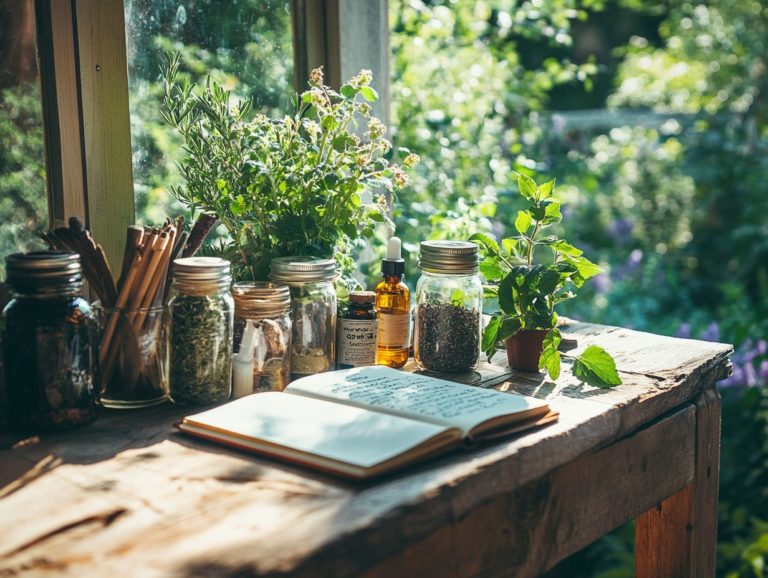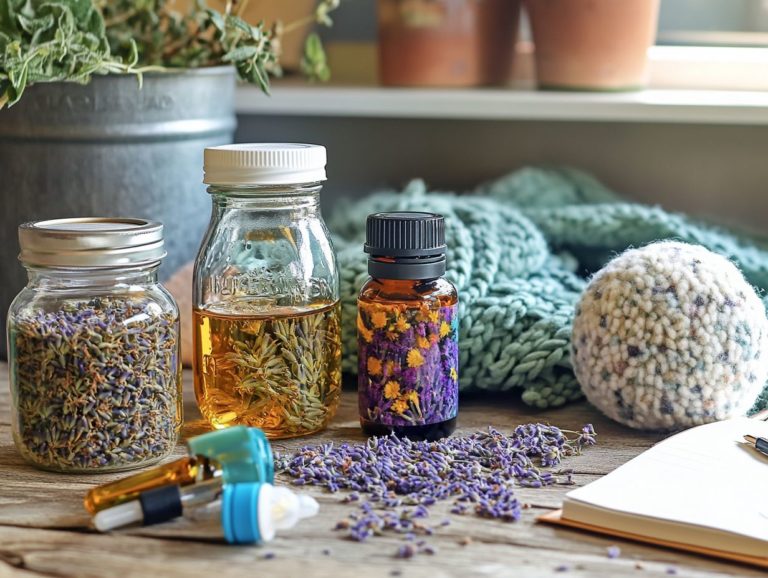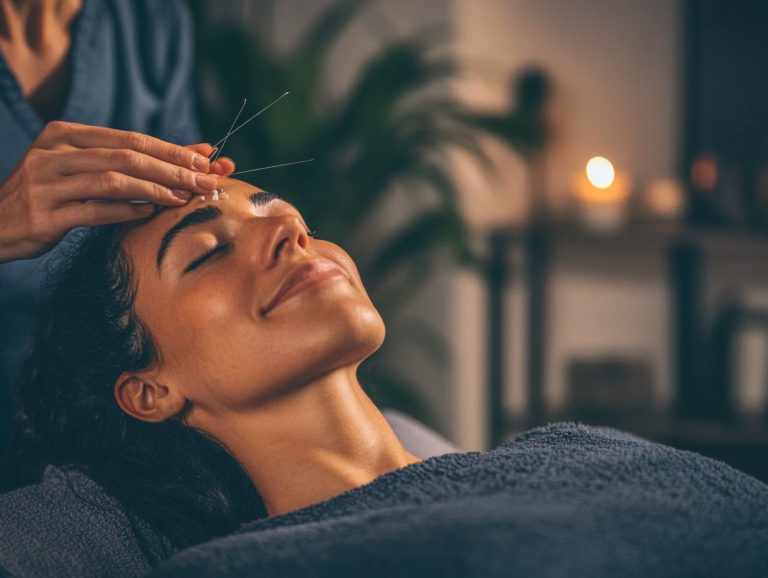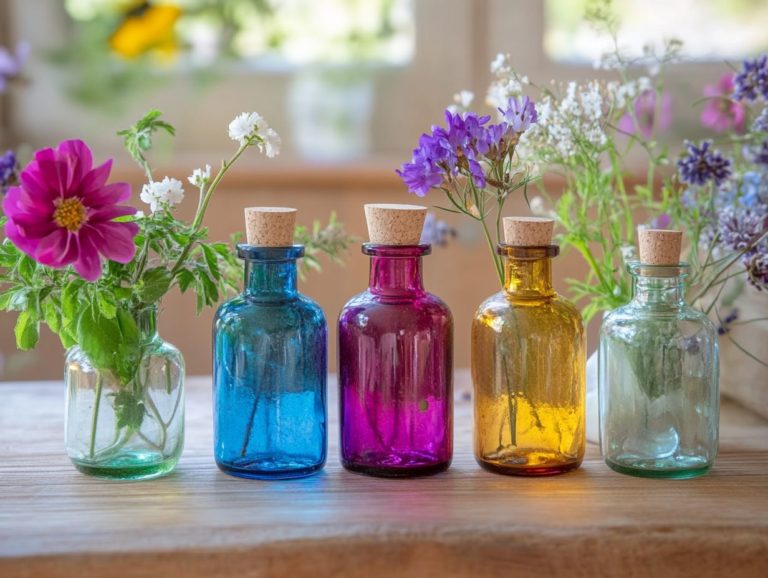How to Use Acupressure for Anxiety Relief
Anxiety impacts millions, creating an ongoing battle for that elusive peace of mind. While traditional therapies hold their merit, many are embracing additional methods like acupressure for relief.
This article delves into the intriguing connection between anxiety and acupressure, unveiling its physical and mental benefits. You ll uncover specific techniques and pressure points designed to alleviate anxiety, along with practical tips for seamlessly incorporating acupressure into your daily routine.
You will find strategies and lifestyle adjustments that can enhance your overall well-being. Jump in and learn how to reclaim your calm now!
Contents
- Key Takeaways:
- Anxiety and Acupressure
- Benefits of Acupressure for Anxiety
- Acupressure Techniques for Anxiety Relief
- Tips for Incorporating Acupressure into Your Routine
- Additional Methods for Managing Anxiety
- Frequently Asked Questions
- What is acupressure and how can it help with anxiety relief?
- How do I locate the acupressure points for anxiety relief?
- What is the proper technique for using acupressure for anxiety relief?
- How long do I need to use acupressure for anxiety relief?
- Can I use acupressure for anxiety relief on my own or do I need a professional?
- Are there any other benefits of using acupressure for anxiety relief?
Key Takeaways:
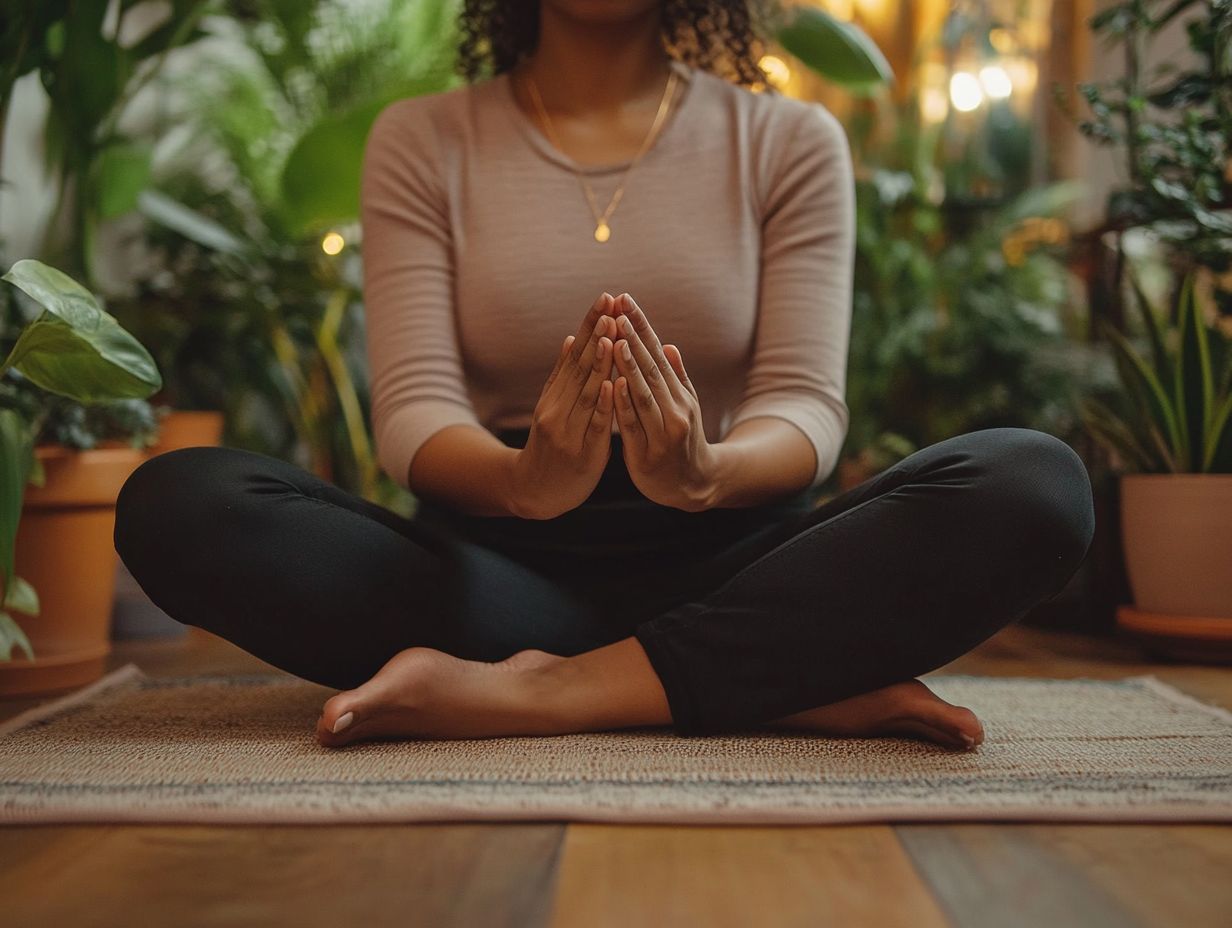
- Acupressure can be an effective tool for managing anxiety by targeting specific pressure points on the body.
- Practicing acupressure regularly can provide both physical and mental benefits, such as reducing tension and promoting relaxation.
- Incorporating acupressure into your daily routine can be beneficial, but it is important to also consider lifestyle changes and additional therapies for managing anxiety.
Anxiety and Acupressure
Anxiety and acupressure are becoming widely recognized as linked components within the framework of traditional Chinese medicine. By manipulating pressure points, you can unlock a pathway to emotional well-being.
This time-honored practice emphasizes the importance of balancing energy flow throughout your body. It addresses anxiety symptoms by stimulating specific areas in your body linked to health that are directly tied to stress and emotional turmoil.
As an alternative medicine approach, acupressure acts as a valuable complementary therapy, merging self-care techniques with relaxation methods aimed at alleviating anxiety and enhancing your overall holistic health.
Understanding the Connection
Understanding the connection between acupressure and anxiety means recognizing how your emotional well-being and stress levels can be influenced by stimulating specific meridians in your body.
When you activate acupressure points, you promote the smooth flow of energy, or ‘qi,’ which is essential for maintaining your emotional balance. This energy flow not only helps relieve physical tension but also profoundly impacts your emotional state by releasing endorphins and calming your nervous system.
The focused pressure you apply to these meridians encourages your body to slip into a state of relaxation, effectively alleviating symptoms of anxiety and fostering a greater sense of calm and clarity. By understanding these biological and psychological mechanisms, you see how this simple technique can enable you on your journey toward emotional resilience.
Benefits of Acupressure for Anxiety
The benefits of acupressure for anxiety are truly multi-faceted. It offers not just anxiety relief, but also a plethora of health advantages that foster psychological well-being and elevate your overall quality of life.
Physical and Mental Benefits
Acupressure offers you a wealth of physical and mental benefits, from muscle relaxation to an enhancement of emotional well-being. It even triggers the relaxation response for those grappling with chronic anxiety.
By applying targeted pressure to specific points on your body, this therapeutic technique can significantly reduce muscle tension and improve circulation, helping to ease those nagging bodily discomforts. On the mental side, engaging in regular sessions can foster a sense of emotional stability, equipping you with effective anxiety management tools that allow you to tackle daily challenges with greater composure.
As your body releases built-up stress and embraces overall relaxation, you may find your focus and clarity noticeably enhanced, further reinforcing acupressure’s integral role in your holistic wellness journey.
Acupressure Techniques for Anxiety Relief
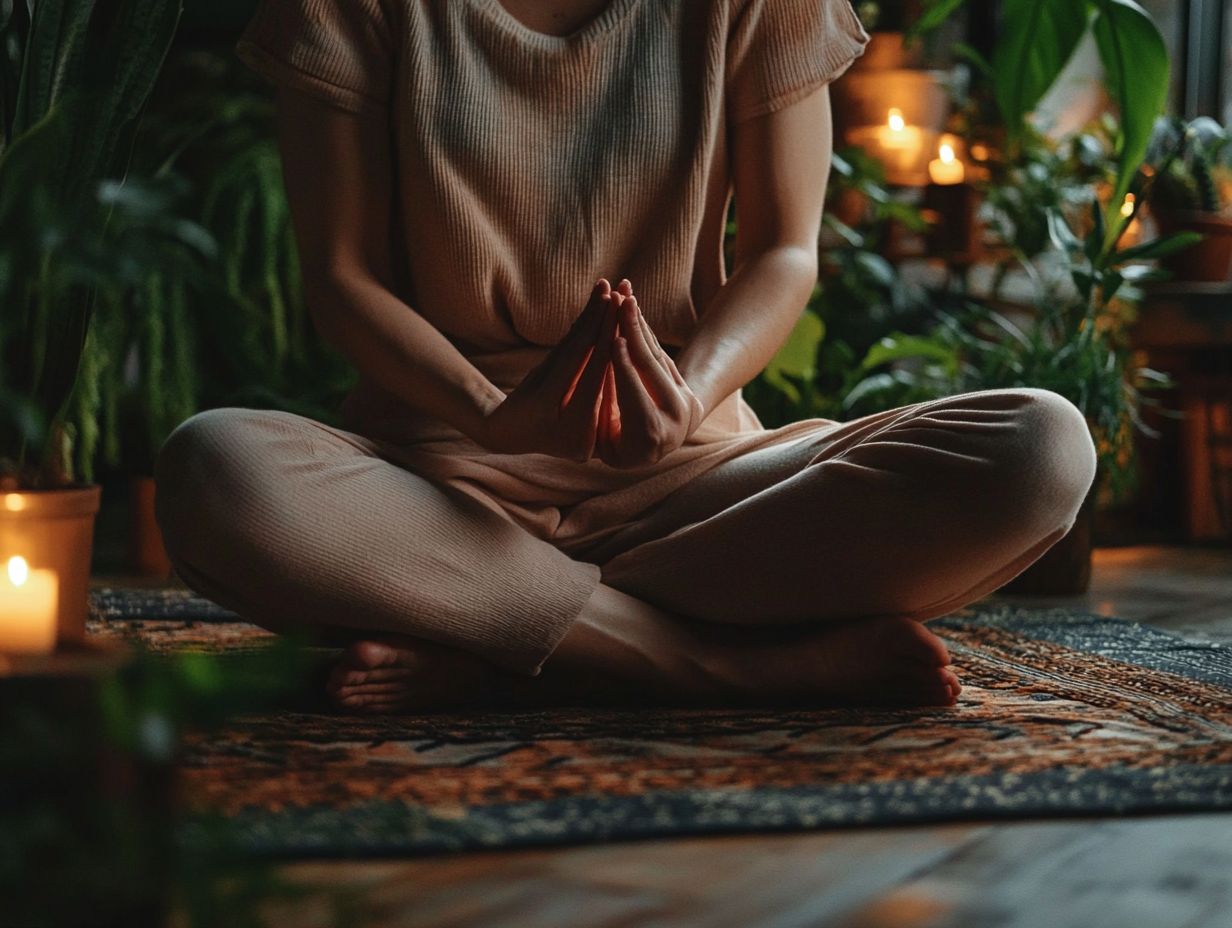
Acupressure techniques for anxiety relief involve applying pressure to specific points on your body, commonly known as pressure points. These methods can seamlessly fit into your daily self-care routine and serve as effective alternative medicine practices.
Start your journey to peace today!
Specific Pressure Points
Specific pressure points in acupressure can help relieve anxiety. Consider hegu, yin tang, and shen men. Each has unique benefits for relaxation and easing anxiety symptoms.
Hegu is located in the webbing between your thumb and index finger. Pressing it works wonders for reducing stress and tension throughout your body. Yin tang, often called the third eye point, is situated between your eyebrows. This point is known for fostering a deep sense of calm and clarity. Lastly, shen men, found in your ear, helps quiet the mind and lift your mood.
Engaging with these specific points can enhance your relaxation practices. Whether you are focusing on mindfulness or meditation, using these techniques offers a holistic approach to managing stress and improving your overall well-being.
Step-by-Step Instructions
Step into tranquility with these step-by-step instructions for using acupressure to alleviate anxiety. Discover self-help strategies that can fit seamlessly into your daily routine, enhancing relaxation through therapeutic techniques and guided breathing.
Start by pressing specific pressure points in your body. This action helps release tension and create a deep sense of calm. Key acupressure points include Yin Tang right between your eyebrows and the Neiguan point on your inner forearm. Apply gentle pressure with your fingertips and hold for 30 to 60 seconds while breathing steadily to create a peaceful atmosphere.
To enhance your relaxation experience, combine these techniques with slow, deep breathing. Inhale through your nose and exhale through your mouth to amplify the soothing effects. Finding a comfortable position is essential; this allows your mind and body to fully absorb the benefits of this practice.
Tips for Incorporating Acupressure into Your Routine
Incorporating acupressure into your routine is a powerful self-care technique that enhances relaxation and alleviates anxiety.
By following specific recommendations about frequency and duration, you can unlock its full potential for well-being.
Creating a Relaxing Environment
A relaxing environment is crucial for maximizing acupressure’s effectiveness. It allows you to engage fully in relaxation methods that promote emotional well-being and aid in stress relief.
Consider using soft lighting in warm colors like amber or soft white. This can create an inviting atmosphere that soothes your mind. Adding calming sounds, such as gentle nature sounds or soft music, enhances the ambiance and encourages a deeper state of relaxation.
Physical comfort is also important. Use supportive cushions or mats for stability and comfort, allowing you to focus entirely on the acupressure techniques. When these elements work together, they facilitate a deeper healing experience while reducing tension, fostering an overall sense of well-being.
Frequency and Duration
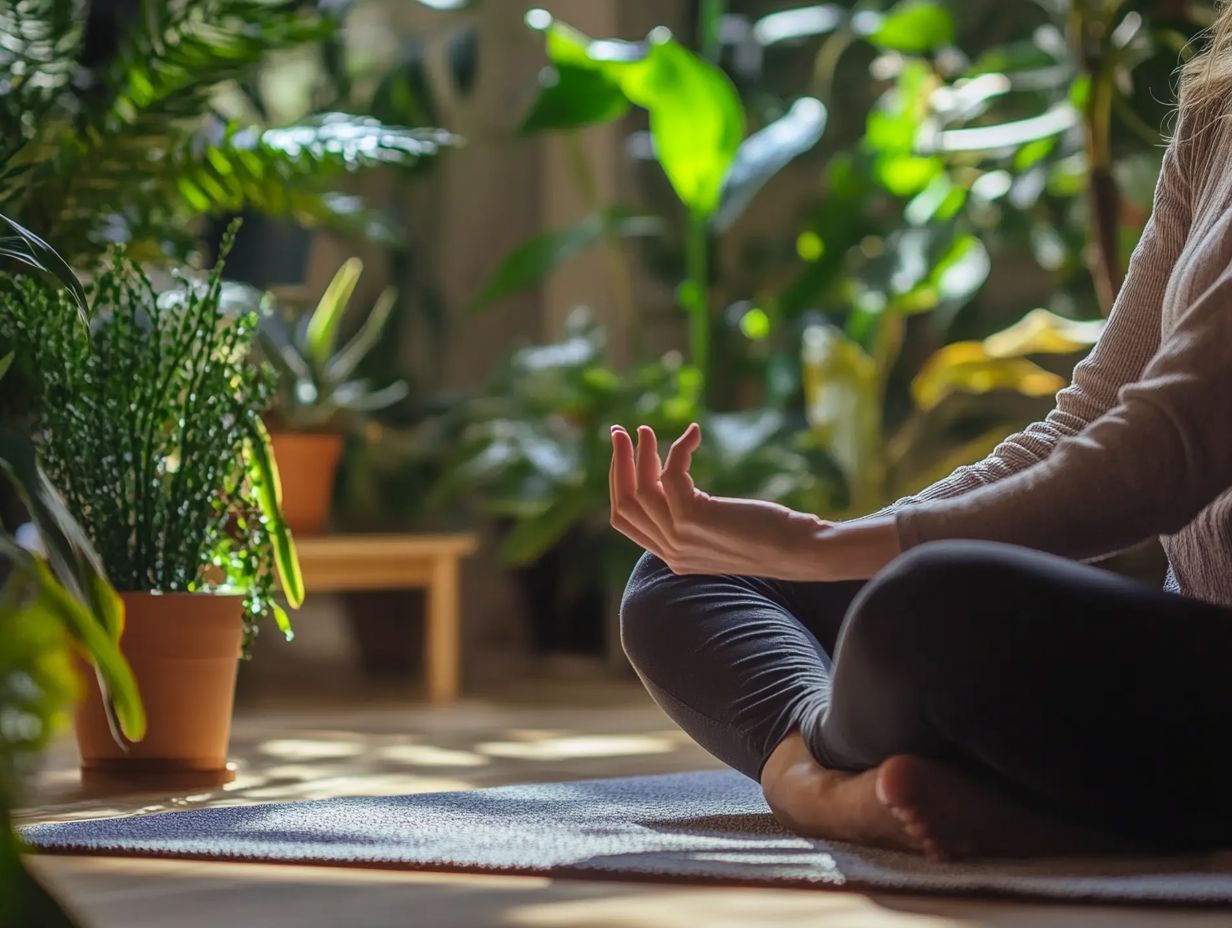
The frequency and duration of your acupressure sessions are vital for their effectiveness. Recommendations vary based on your specific anxiety levels and therapeutic goals.
If you experience mild anxiety, a few sessions per week lasting about 15 to 20 minutes can make a significant difference. For chronic anxiety, daily practices of around 30 minutes or more may be beneficial.
Keep in mind that you can customize acupressure techniques to suit your needs. You might prefer shorter sessions throughout the day to address stress as it arises, while others may find comfort in longer, focused periods of relaxation.
This flexibility allows you to find a rhythm that integrates seamlessly into your lifestyle and enhances your emotional well-being.
Transform your experience with acupressure by trying these techniques for a week. Share your journey and how it impacts your anxiety relief!
Additional Methods for Managing Anxiety
Along with acupressure, you have a wealth of methods at your disposal for managing anxiety each one designed to enhance your emotional well-being and overall mental health.
Consider exploring additional therapies, implementing lifestyle changes, and embracing mindfulness practices. Each approach offers unique benefits that can contribute to your journey toward tranquility and balance.
Complementary Therapies
Discover how complementary therapies can transform your stress relief journey! Massage therapy and various therapeutic techniques can significantly enhance your overall stress relief and address anxiety symptoms.
When you combine these therapies with acupressure, you create an overall approach that fosters deeper relaxation and emotional balance.
Mindfulness practices like yoga and meditation play a crucial role in cultivating mental clarity and promoting inner peace.
Aromatherapy, with its soothing essential oils, adds a fragrant layer that can calm your nerves and elevate your mood, further amplifying the benefits of acupressure.
Engaging in breathwork can deepen your relaxation response, allowing you to release tension more effectively. These modalities enhance your relaxation and lead you toward a complete strategy for managing anxiety.
Lifestyle Changes
Implementing lifestyle changes is a crucial strategy for enhancing your emotional well-being and effectively managing stress.
By making conscious choices about your diet and incorporating regular exercise, you can significantly impact your anxiety levels.
A balanced diet rich in nutrients provides essential support for brain health. Engaging in physical activity releases endorphins your body s natural stress relievers.
Establishing good sleep habits sets the foundation for emotional stability, enabling you to handle daily pressures with greater ease.
When these lifestyle adjustments are complemented by acupressure techniques, the combination enhances your relaxation and mental clarity, allowing for a more complete approach to managing anxiety.
Frequently Asked Questions
What is acupressure and how can it help with anxiety relief?
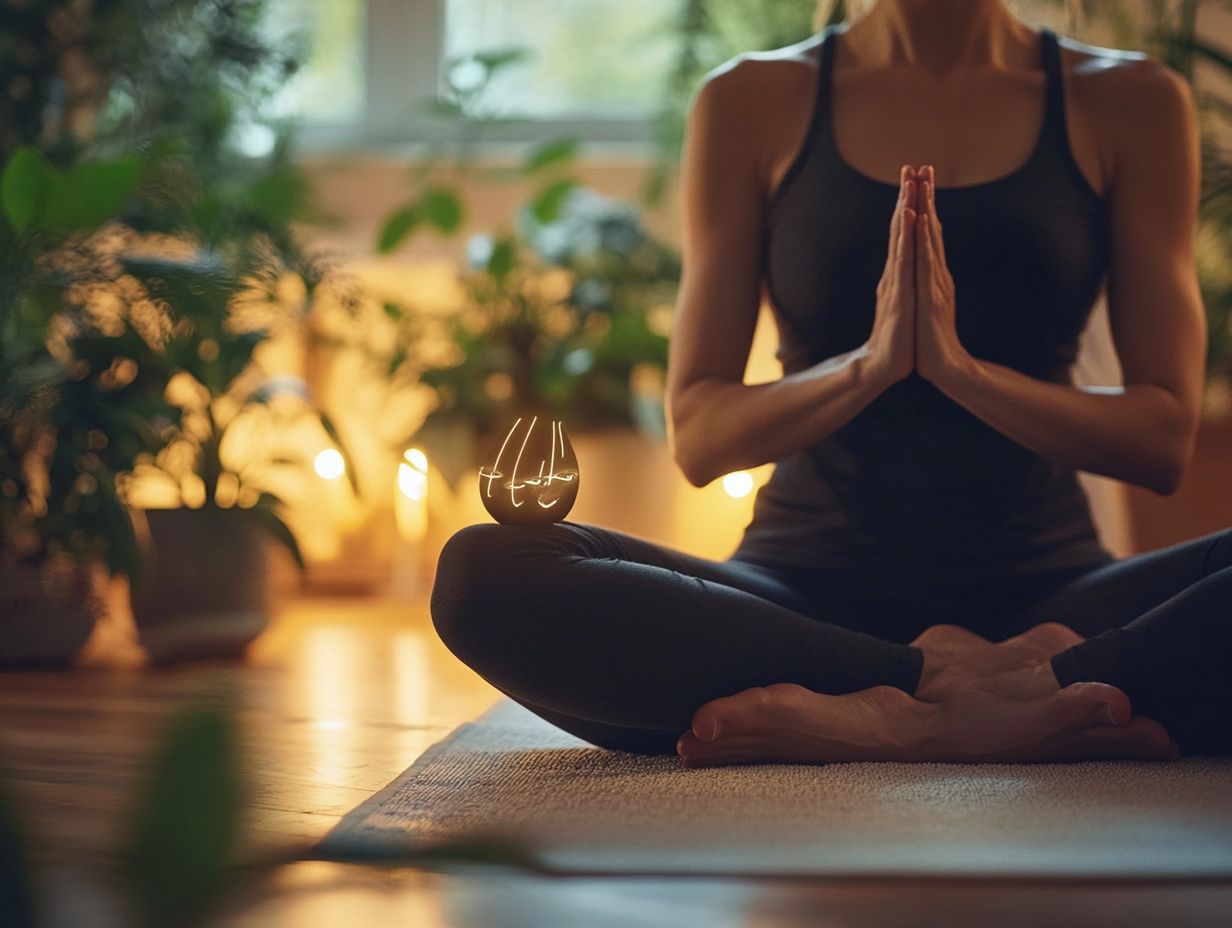
Acupressure is a traditional Chinese healing technique that involves applying pressure to specific points on the body. It can help relieve anxiety by promoting relaxation and reducing tension.
How do I locate the acupressure points for anxiety relief?
Several acupressure points can help with anxiety relief, including:
- The Shen Men point
- The Inner Gate point
- The Heavenly Gate point
You can find these points by using a hand chart or by consulting an acupressure practitioner.
What is the proper technique for using acupressure for anxiety relief?
The proper technique involves using the pads of your fingers to apply firm but gentle pressure to the selected points. You can also use circular or tapping motions to stimulate the points.
It is important to take deep, slow breaths while applying pressure.
How long do I need to use acupressure for anxiety relief?
The duration of acupressure for anxiety relief may vary depending on the individual and the severity of their anxiety. Some people may experience immediate relief, while others may need to practice for longer periods.
It is recommended to practice acupressure for at least 10-15 minutes a day for best results.
Can I use acupressure for anxiety relief on my own or do I need a professional?
You can use acupressure for anxiety relief on your own, but learning the proper techniques from a certified acupressure practitioner is important. They can provide guidance on which points to focus on based on your specific needs.
Are there any other benefits of using acupressure for anxiety relief?
In addition to anxiety relief, acupressure can also have other positive effects, such as:
- Reducing stress
- Improving sleep
- Boosting overall well-being
It can also be used as a complementary therapy alongside other treatments for anxiety.
Start your journey to anxiety relief today explore these methods and feel the difference!

